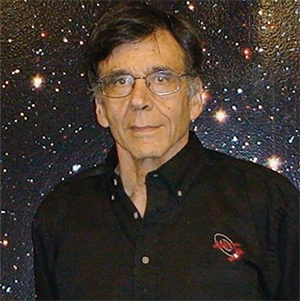By Abigail Dove
With over 2,500 members, the New England Section (NES) is a home for APS members based in Massachusetts, Connecticut, Rhode Island, Vermont, New Hampshire, and Maine. Consistent with the sheer multitude of academic and research centers in this part of the country, NES is one of the largest and most active geographical sections in APS’s ranks.
Geographical sections are an important part of the APS ecosystem, strengthening the physics community in different parts of the country and helping APS diffuse the knowledge of physics at a regional level. In addition to acting as a networking platform for physicists in different fields and at different stages of their careers, geographical sections also provide a vehicle for interactions between neighboring academic institutions (from small liberal arts colleges to large research universities), government laboratories, and industry.
NES was established in 1932 as APS’s first-ever geographical section. In an effort to build a bigger grassroots presence for APS across the country, geographical sections have expanded to encompass the entire US: in addition to New England, this includes the Far West (FWS; see APS News July 2019), Four Corners (4CS), Mid-Atlantic (MAS), New York State (NYSS), Northwest (NWS), Eastern Great Lakes Section (EGLS), Prairie Section (PSAPS), Southeastern (SESAPS), and Texas (TSAPS).

Richard Price
Involvement in a geographical section provides opportunities to learn about the research ongoing at other nearby institutions and—in contrast to more discipline-centered units at APS like divisions, topical groups, and forums—gives members unique exposure to other areas of physics outside of their particular field.
“Each geographical section has its own features. In the case of NES, the feature is a very high density of institutions of higher learning,” explained NES chair Richard Price (MIT). This aspect of NES provides ample opportunities for networking: “Faculty at research-intensive institutions can find that there is overlap with work going on at small schools. The faculty at these research institutions can also use their involvement in NES as a way to make connections with and attract potential graduate students. Conversely, potential graduate students get an opportunity to introduce themselves to researchers they might want to work with.”
A particular point of pride for NES is its semi-annual meeting, held every year in the spring and fall. Typically, NES meetings feature invited sessions featuring leaders in their respective fields paralleled by contributed talks and a poster session. Many of these presenters are undergraduates and graduate students having their first experience of discussing their work at a professional meeting. Past plenary sessions spanned such diverse topics as astrophysics and atmospheric physics, gravitational wave detectors and quantum sensing, geological characteristics of spacetime, medical physics, and applications of artificial intelligence.
The NES Fall 2021 Meeting is slated for October 22-23. Though academic life is edging closer to normal, out of an abundance of caution the meeting will take a virtual format. Price framed the virtual format as an opportunity to involve more remote institutions in New England that have not been the site of an NES meeting for many years, if at all. “For us in New England, ‘remote’ means Maine, so we will have a ‘Maine Event’ featuring the University of Maine, Bowdoin, and Bates,” he explained. In lieu of physically hosting the meeting, these three institutions will present an invited talk on their physics departments and encourage their students to present talks or posters—thereby reaping many of the institutional benefits of hosting a meeting in-person without the demands of physically doing so.
More information about NES’s Fall Meeting can be found on the meeting website. Abstracts are due on October 14, and registration closes on October 21.
NES strongly encourages the active participation of undergraduate and graduate students—who make up 40 percent of the section’s ranks—in its semi-annual meetings. Price pointed out that attendance at a NES meeting can be a “distinct opportunity” for students, allowing them the chance to present posters or deliver a talk to a friendly audience outside their own institution “without the intimidation of a research-dominated environment.” As an added incentive, students who submit first-author abstracts to NES meetings can be reimbursed up to $300 for travel-related expenses. The NES Fall Meeting will additionally include cash prizes for student talks and student posters.
Another perk for students who attend NES meetings is the opportunity for career development, including a career paths outside of academia—an area that is often unfamiliar to young scientists. “Like APS itself, NES is increasing its connection to industry careers. We have been featuring speakers from industry and non-academic careers as well as trying to have meetings in non-academic settings,” explained Price.
Looking to the future, the NES executive committee’s goals for the section center around boosting participation at NES meetings to pre-pandemic levels. This is a worthwhile mission: these semi-annual meetings provide an important vehicle for APS to hear from people who might not otherwise attend the larger March Meeting or April Meeting—for instance, students, industrial physicists, and the faculty at smaller institutions—and can in turn help make APS more important in the professional lives of these people on the outskirts of the traditional APS demographic. “The executive committee is addressing this with more timely and frequent messages about meetings and opportunities (nagging), with innovations (student cash awards), and with our fingers crossed (hope),” noted Price.
Overall, NES stands out as a lively and inclusive geographical section, with plenty to offer members in terms of professional development and valuable learning opportunities. More information on this unit can be found at the NES website.
The author is a freelance writer in Stockholm, Sweden
©1995 - 2024, AMERICAN PHYSICAL SOCIETY
APS encourages the redistribution of the materials included in this newspaper provided that attribution to the source is noted and the materials are not truncated or changed.
Staff Science Writer: Leah Poffenberger
Contributing Correspondents: Sophia Chen, Alaina G. Levine
September 2021 (Volume 30, Number 8)
Articles in this Issue

